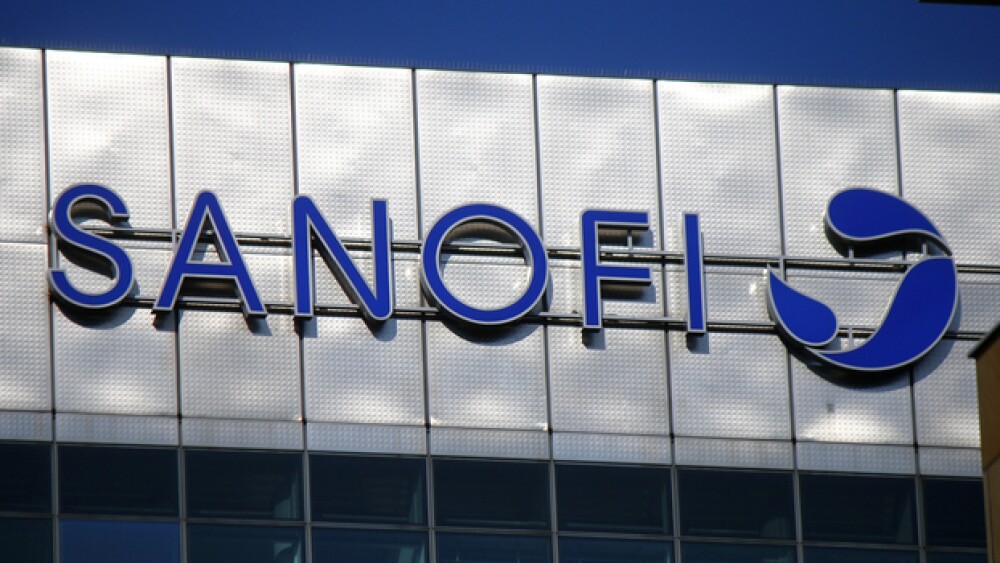A Phase III trial compared Sanofi’s Soliqua/Suliqua to other GLP-1 receptor agonists (GLP-1 RA), with Soliqua showing a superior decrease of average blood sugar level (HbA1c) after 26 weeks.
360b / Shutterstock
At this weekend’s American Diabetes Association (ADA) 79th Scientific Sessions, Sanofi presented data from its Phase III LixiLan-G trial. The trial compared Sanofi’s Soliqua/Suliqua to other GLP-1 receptor agonists (GLP-1 RA), with Soliqua showing superior decrease of average blood sugar level (HbA1c) after 26 weeks.
The LixiLan-G trial looked at 514 adults with type 2 diabetes whose disease wasn’t well controlled by receiving GLP-1 receptor agonists. There was a broad range of available GLP-1 RAs, including either once-daily liraglutide (Novo Nordisk’s Victoza), twice-daily exenatide (Bydureon or Byetta), or once-weekly extenatide extended release, GlaxoSmithKline’s Tanzeum (albiglutide) or Eli Lilly’s Trulicity (dulaglutide), and metformin with or without pioglitazone, with or without a sodium-glucose transport protein 2 inhibitor (SGLT2i). This primarily means Soliqua/Suliqua was compared to standard treatments for type 2 diabetes in patients who weren’t controlling their disease well.
After 26 weeks, patients who switched to Soliqua had a 0.6% better reduction in HbA1c compared to continuing treatment with GLP-1 RA. In particular, more patients on Soliqua hit HbA1c below the 7% target that the ADA recommends compared to those receiving other GLP-1 RA.
“We are committed to providing people living with diabetes a broad range of options that can help support personalized care,” stated Rachele Berria, Global Head of Diabetes Medical Affairs at Sanofi. “As the first comparison between Soliqua and both daily and weekly GLP-1 RA treatments, this study provides physicians with new data that they could use when considering Soliqua as a part of a personalized treatment plan.”
Soliqua’s safety profile was consistent with what was seen in other studies, which is to say, 22% of the patients who switched to Soliqua experienced nausea, diarrhea or vomiting compared to only 10% of patients who stayed on their previous GLP-1 RA. Low blood sugar (hypoglycemia) rates were consistent with established safety profiles.
Patients who received Soliqua were followed for another 26 weeks. That data will be presented later.
Soliqua is an injectable treatment. It is made up of two drugs, insulin glargine and lixisenatide. It is marketed in Europe as Suliqua, where it is prescribed in combination with metformin for adults with type 2 diabetes when metformin alone or metformin combined with another oral glucose-lowering drug or with basal insulin. It is approved in the U.S. as Soliqua 100/33, where it is prescribed as an adjunct to diet and exercise for adults with type 2 diabetes.
The trial results come just days after the French company announced its chief executive officer, Olivier Brandicourt, will be leaving the company in September to be replaced by Paul Hudson. In the four years Brandicourt led the company, shares have dropped 17.9%.
A big part of the company’s problems is related to pricing pressure and intense market competition, especially in the U.S., for diabetes drugs. During that four-year period, Sanofi’s Lantus insulin product sales have dropped by almost half.
The company has tried to expand into the hemophilia and rare disease market with mixed success. There has been a tendency on the part of investors and analysts to question if Sanofi by itself is capable of developing successful new drugs. Most of its breakthrough products have been via long-term collaboration pacts with Regeneron Pharmaceuticals.
Although this study is promising, there will likely be some reluctance on the part of patients to shift from oral medications to an injectable product.





